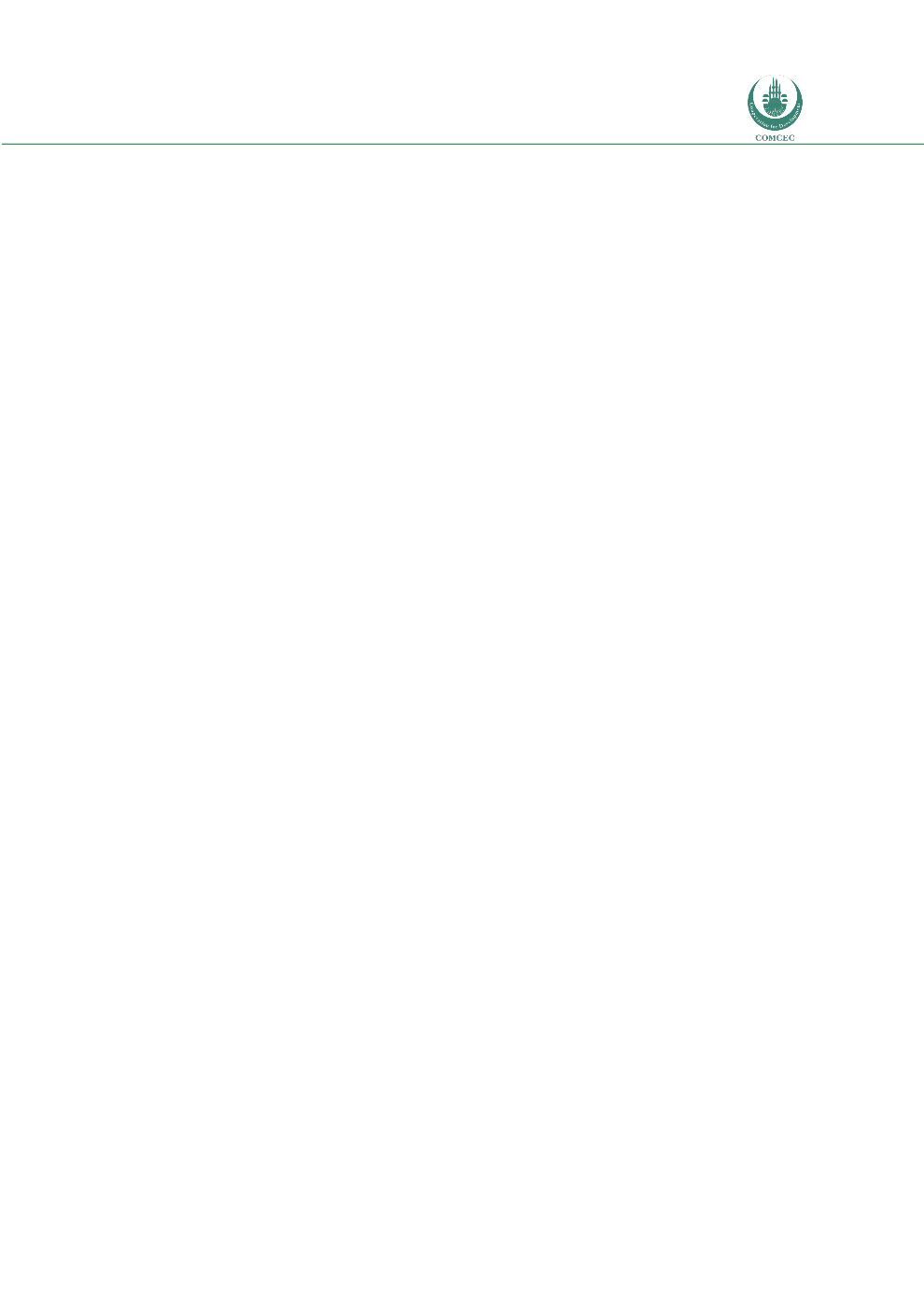

Risk Management in
Islamic Financial Instruments
97
4.4.6 Tunisia
Located at the northern part of Africa, Tunisia is an emerging financial market with a potential
consumer base for Islamic financial services industry. At present, Islamic banking market
share accounts for 2.2% of the total banking assets as of 2011. The Islamic financial market
comprises three Islamic banks, one full-fledged takaful company, and one Islamic fund. More
recently, the World Economic Forum’s 2011 Global Competitiveness Report has ranked
Tunisia top amongst the African countries. The country per capita GDP is USD 3,687.34 and
over the last decade it has grown at an average 4.13% rate. Among the total population of 10.5
million, around 98% is Muslim. However, the country needs to enhance legal and regulatory
framework to support a conductive environment for Islamic banks to compete with the
conventional banking counterpart.
4.4.6.1 Tunisian Banking Sector
Tunisia is home to three Islamic banks and a number of conventional banks. Among them, one
Islamic bank and seventeen conventional banks are represented the BankScope database.
Islamic banks are in general smaller banks with lower asset size as compared to their
conventional counterparts. Average total asset of the Tunisian Islamic bank sample is 493.58
million USD with average deposit of 301.15 million USD. On the other hand, average total asset
of the Tunisian conventional bank sample is 1,830.41million USD with average deposit of
1,266.610 million USD.
4.4.6.2 Risk Matrices
Asset Quality Ratios
Asset qualities for the Tunisian Islamic banks are poor compared to their conventional banking
competitors. Average Loan Loss Res/Gross Loans ratio is higher for Islamic banks (2.72 %)
compared to the conventional banks (2.50%); on the other hand, Loan Loss Prov/Net Int Rev is
negative for Islamic banks (-4.32%) compared to conventional banks (19.38%). (See Chart 47)
Capital Adequacy ratios
In general, Islamic banks in Tunisia keep higher capital cushion as compared to their
conventional banking counterparts. Chart 48 shows that Equity/Net Loans of the Islamic banks
22.81% is higher than the same for the conventional banks, 8.13%. Besides, Equity/Net Loans
of the Islamic banks 12.48% is higher than the same for the conventional banks, 6.46%.
Operational Efficiency ratios
In general, higher operating ratios represent lower cost of fund, higher efficiency and higher
yield of equity and asset.
Higher ratios of NIM, Net Int Rev/Average Asset and Non Int Exp/ Avg Asset for the Tunisian
conventional banks (4.93%, 4.45% and 4.47%) as compared to the same of the Islamic banks
(3.48%, 2.94% and 3.19%) represent that conventional banks in general enjoy benefit from
cheaper sources of funding. However, the yield of Return On Avg Assets (ROAA) and Return On

















